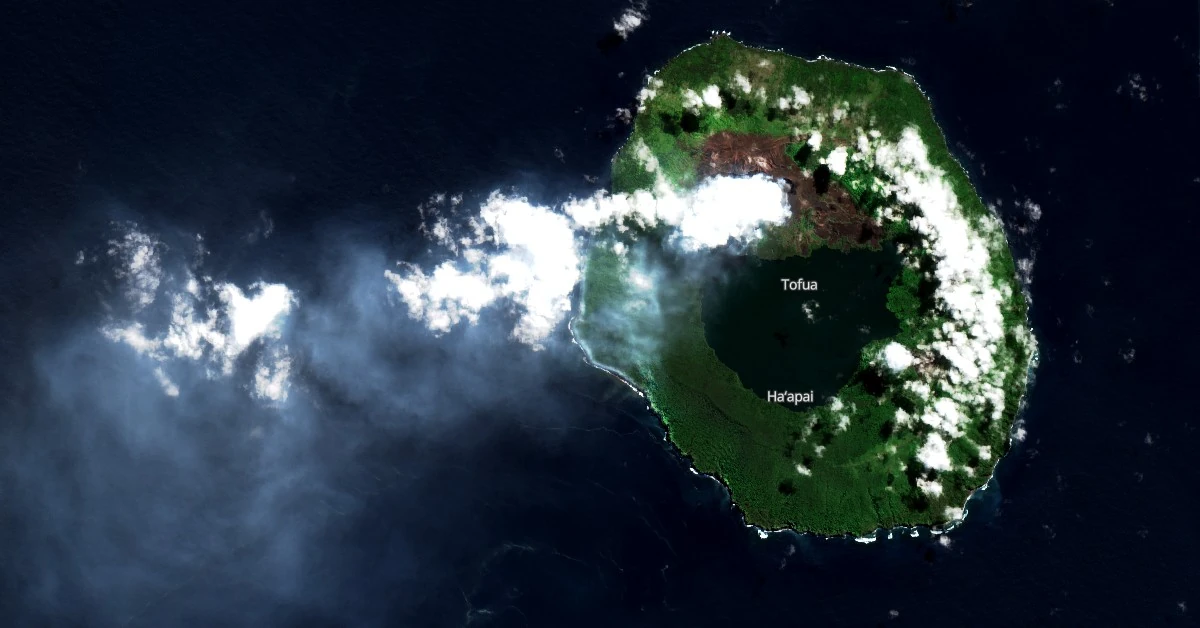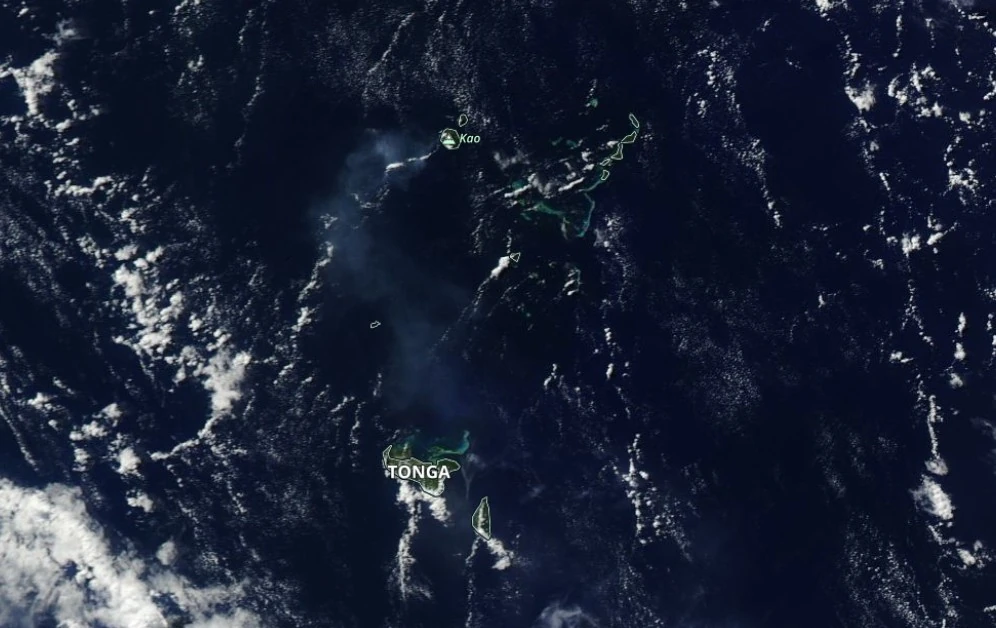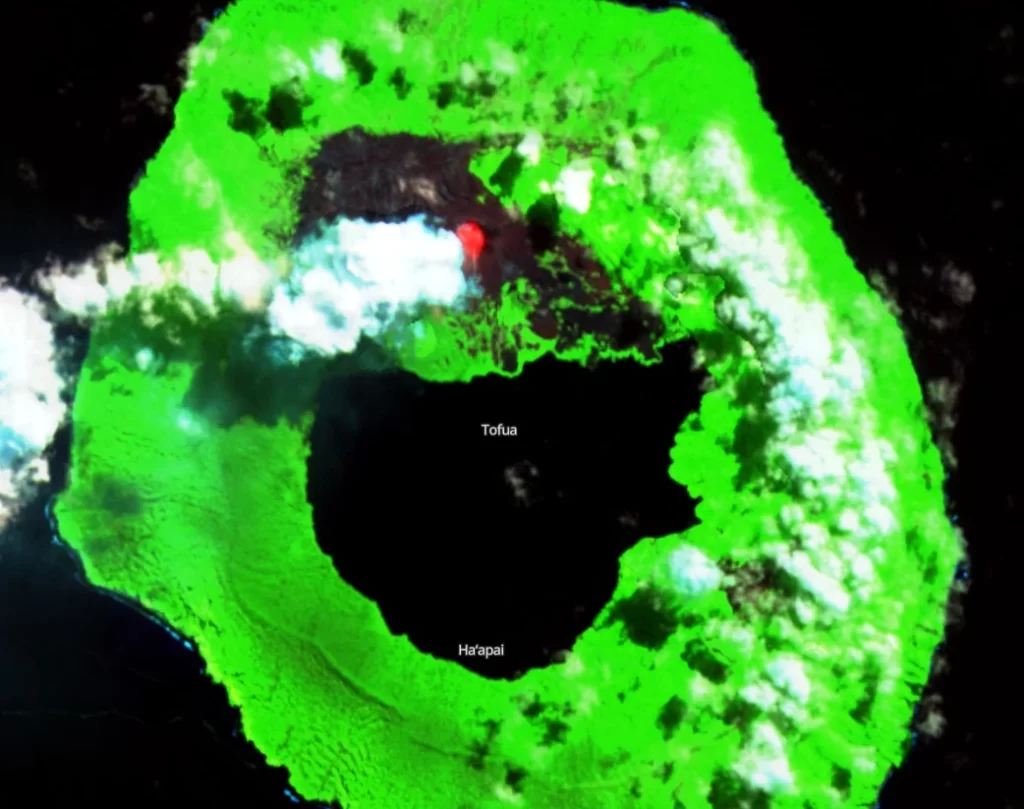Increased eruptive activity, high sulfur dioxide emissions at Tofua volcano, Tonga

Volcanic activity increased at Tonga’s Tofua volcano at 20:56 UTC on April 25, 2024 (09:56 LT on April 26), with very intense thermal emission detected by MIROVA.
Data collected on April 26 by the European Sentinel-2 satellite showed a very intense thermal signal in the crater of the Lofia cone, accompanied by abundant bluish degassing, characteristic of high SO2 concentrations.
On the same day, the plume was seen passing over the capital Nuku’alofa, 150 km (93 miles) south of the volcano.

JMA’s Himawari-9 satellite images showed an ash cloud rising to a height of 4 – 6 km (2.5 – 3.7 miles) on April 28. The ash cloud moved in the NW direction and continued to remain in the atmosphere over the next 4 hours.
In a Public Notice issued on April 29, the Tonga Geological Services (TGS) said ongoing monitoring of the Tofua volcano indicated a slight decrease in thermal anomalies, with only 14 events recorded by VOLCAT, compared to 16 events in the previous observations.
“The volcanic activity, which commenced on Friday, April 26, has exhibited an unusual pattern, with continuous monitoring revealing fluctuations in event frequency,” TGS said.
At the time, this activity poses a low risk to the Vava’u and Ha’apai communities.
Mariners are advised to sail beyond 2 km (1.2 miles) from the volcano until further notice.

The current eruptive period at Tofua started on October 2, 2015 (VEI 0).
Situated in the central part of the Tonga Islands, Tofua Island is the visible peak of a vast stratovolcano, which Captain Cook observed erupting in 1774.
The volcano’s summit is marked by a caldera that spans approximately 5 km (3.1 miles) wide, with walls that descend sharply around 500 m (1 640 feet). At the northern edge of a cold freshwater lake within the caldera—lying only 30 m (98 feet) above sea level—three post-caldera cones have developed. The easternmost cone features three craters and has emitted fresh basaltic-andesite lava flows, some reaching into the caldera lake.
The largest cone, Lofia, is characterized by a steep crater measuring 70 m (230 feet) in diameter and 120 m (394 feet) deep, which has been the origin of recorded eruptions since the 18th century. This cone remains fumarolically active, with a crater floor composed of a ponded lava flow.
References:
1 Public notices on Tufua volcano #1 and #2 – Tonga Geological Services
2 Volcan Tofua : activité volcanique en nette hausse – Culture Volcan – April 28, 2024
3 Tofua – Geological summary – GVP
Featured image credit: Copernicus EU/Sentinel-2, The Watchers. Acquired on April 26, 2024

Commenting rules and guidelines
We value the thoughts and opinions of our readers and welcome healthy discussions on our website. In order to maintain a respectful and positive community, we ask that all commenters follow these rules.